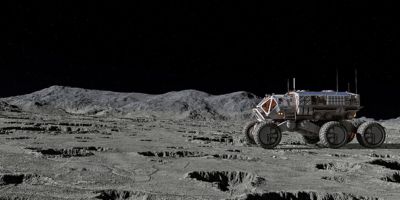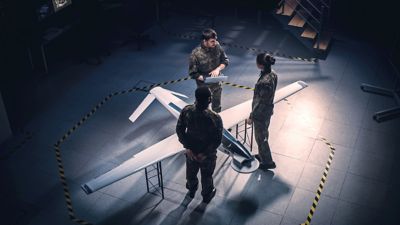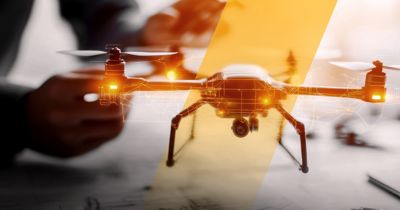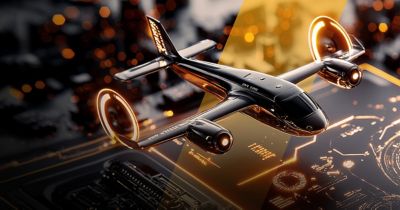
An autonomous rover with an astronomically high price tag and a lengthy development process rolls across the Moon. While there’s never a good time for a mission setback or failure, you certainly don’t want to experience failure nearly 240,000 miles from Earth’s surface.
To avoid this worst-case scenario, extensive testing and validation of all hardware and software systems before this rover leaves Earth’s surface is an incredibly important part of its development process.

Of course, this isn’t true only in this example — testing and validation are important steps no matter what you’re working on. Consider the wider aerospace and defense (A&D) industry, in which innovators face unique hurdles depending on their specific applications and use cases. These can range from autonomous drones that must complete flight tests and demonstrate regulatory compliance to uncrewed underwater vehicles that must function at varying depths and maintain autonomous navigation in deep-sea environments.
While performing these tests and validating autonomous systems are essential in the development process, significant challenges still exist. These include:
- Resource inefficiency
- System complexity
- Explainability
- Compliance and safety
To face these challenges and design autonomous systems for mission-critical applications, engineers need a way to efficiently, comprehensively, and accurately test and verify their designs.

Your Introduction to Modern Testing and Validation Techniques
Let’s start with model-in-the-loop (MiL) testing. With MiL, engineers can perform theoretical testing via models of every autonomous subsystem. The process involves creating comprehensive and accurate digital models that represent the behavior of each autonomous subsystem in different mission scenarios. After these models are developed, engineers can use simulation to predict how their designs will function in these scenarios and evaluate performance. Engineers can use their evaluations from MiL to improve model accuracy and provide essential data for future development.

Next up is software-in-the-loop (SiL) testing, which involves integrating virtual models with system software to test software interactions without requiring physical hardware. By running autonomous software in a virtual environment, engineers can verify its logic, function, and integration capabilities. SiL can also analyze a system’s performance in different operational situations.
Hardware-in-the-loop (HiL) testing prepares for dynamic physical testing by configuring real hardware components within a simulated operational environment. HiL represents the critical final step before moving on to mass production and validating final prototypes.
With HiL tests, engineers can monitor how their hardware reacts and functions within real-world environments. Using the resulting data, engineers can validate their hardware’s performance, evaluate system reliability, test operational readiness, and validate the effectiveness of hardware and software integration.
Finally, cybersecurity testing lets researchers and engineers build systems that are protected from hackers and other cybercriminals. This process is not a one-and-done step, either. Cybersecurity testing must be conducted throughout the development process and even after deployment to stay updated and ensure that current best practices are followed. Additional importance is also given to development, security, and operations (DevSecOps), which prioritizes security throughout the entire software development process.
Why Introducing Simulation and Digital Engineering Into the Testing and Validation Processes Is Key
Although it is a cornerstone in the development process, testing and validation are difficult. This step can be lengthy, costly, and sometimes unrealistic. For example, consider the autonomous rover example from earlier. Analyzing how the rover performs throughout its entire mission, from leaving Earth to landing and traversing the Moon, is impossible via physical testing on Earth.
Engineers can overcome these hurdles with digital mission engineering (DME). By applying DME and simulation solutions, A&D engineers can reduce the costs and length of their testing and validation processes. Such model-based test & evaluation tests can also help accurately identify and prioritize areas with higher risk that could use additional physical testing.
DME and simulation software can also be used with artificial intelligence (AI) and machine learning (ML) technologies in this stage. For example, engineers can use these solutions to optimize model parameters for MiL, reinforce learning for SiL, and analyze machine vision responses to physical sensor inputs for HiL. As such, engineers can use DME and simulation software to validate and gain confidence in AI/ML components before integrating them into their designs.

With DME and simulation software, autonomous system developers gain an even wider range of benefits, too.
This includes:
- Saving engineers time by rapidly evaluating test plans and reviewing results
- Providing directors and mission leaders with rich visualizations of test events and data that can be used to support cause and effect analyses, understand the autonomous system under test performance, and easily share program progress against performance goals with stakeholders
- Supporting traceability and documentation required for compliance with standards
Leaders in the A&D industry can more rapidly develop rigorously tested designs to achieve mission success when using DME and simulation solutions.
The Advantage Blog
The Ansys Advantage blog, featuring contributions from Ansys and other technology experts, keeps you updated on how Ansys simulation is powering innovation that drives human advancement.



